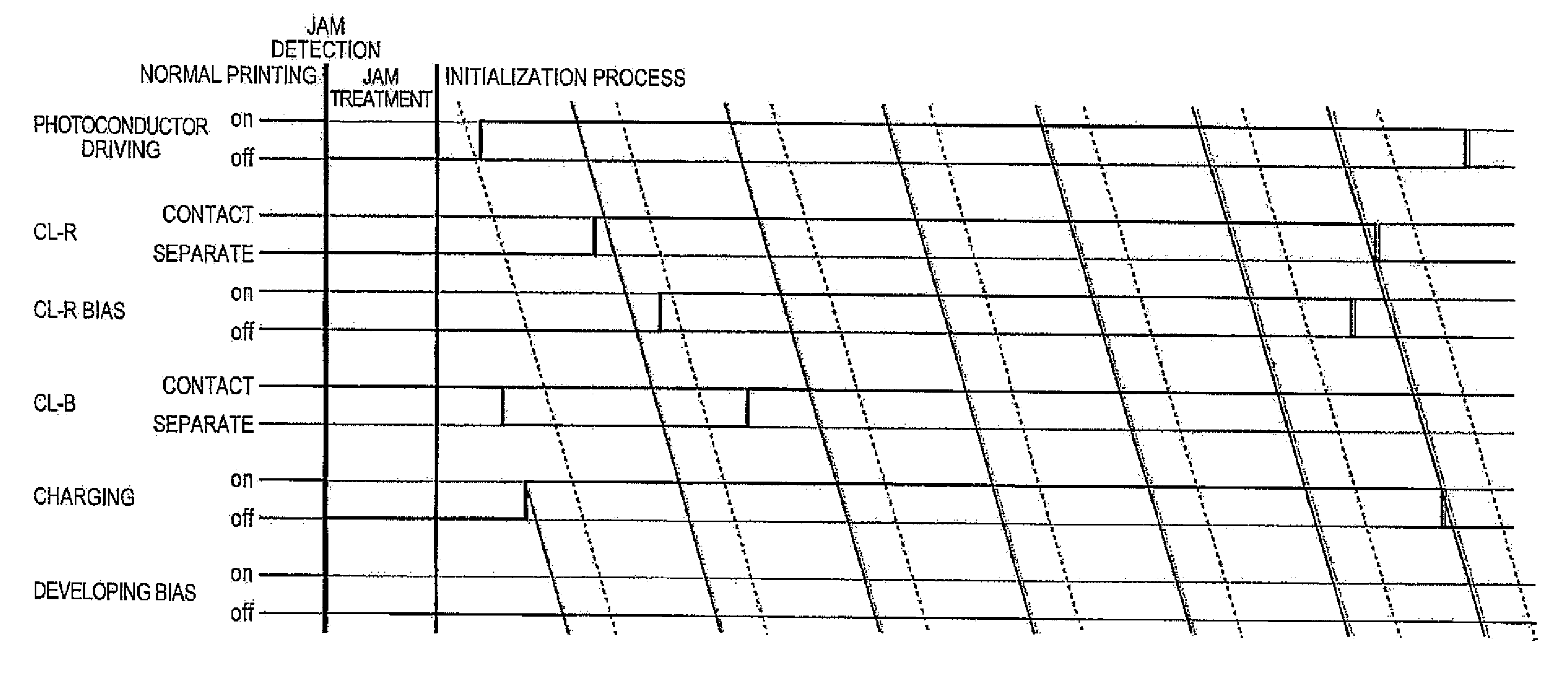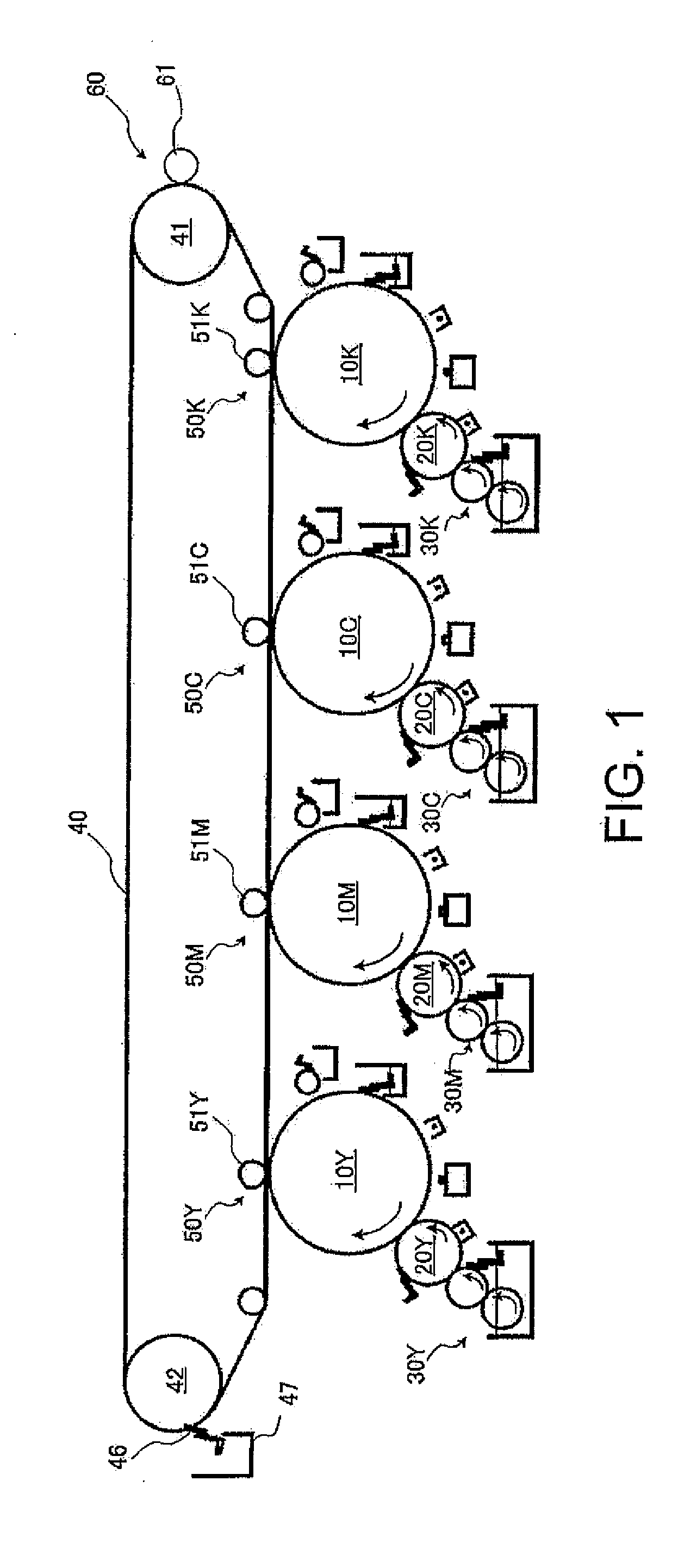Image Forming Device and Control Method Thereof
a technology of forming device and image, which is applied in the direction of electrographic process apparatus, optics, instruments, etc., can solve the problems of affecting damage to the protective layer on the surface of the photoconductor or even the photoconductor layer, and inability to print correctly, so as to improve the cleanability of the latent image carrier, improve the cleanability, and facilitate the recovery of the developer
- Summary
- Abstract
- Description
- Claims
- Application Information
AI Technical Summary
Benefits of technology
Problems solved by technology
Method used
Image
Examples
first embodiment
[0063]FIG. 5 shows a timing chart of the photoconductor cleaning control. It should be noted that solid slant lines each represent a front edge position of the charged area, and dotted slant lines each represent a front edge position of the toner not yet transferred.
[0064]Firstly, in a printing state, as shown in FIG. 2, the photoconductor 10Y is driven, a charging bias of about +600 V and a developing bias of about +400 V are both applied in ON states, the photoconductor cleaning roller 82Y is separated with no bias applied, namely with the bias in an OFF state, and the photoconductor cleaning blade 87Y is contacted thereto.
[0065]In this condition, the liquid developer supplied from the agitating supplying roller 34Y to the developer supply roller 32Y is regulated by the regulating blade 33Y to be in a condition in which the amount of developer is adjusted, and then the liquid developer is transferred to the developing roller 20Y, and further to the portions of the photoconductor 1...
fourth embodiment
[0100]FIG. 15 shows a timing chart of the photoconductor cleaning process control.
[0101]It should be noted that solid slant lines each represent a front edge position of the charged area, and dotted slant lines each represent a front edge position of the toner not yet transferred.
[0102]Firstly, in a printing state, the photoconductor 10Y is driven, a charging bias of about +600 V and a developing bias of about +400 V are both applied in ON states, the photoconductor cleaning roller 82Y is not applied with the bias in the OFF state, and the photoconductor cleaning blade 87Y is contacted thereto.
[0103]In this condition, the liquid developer supplied from the agitating supplying roller 34Y to the developer supply roller 32Y is regulated by the regulating blade 33Y to be in a condition in which the amount of developer is adjusted, and then the liquid developer is transferred to the developing roller 20Y, and further to the portions of the photoconductor 10Y on which the latent image is ...
PUM
 Login to View More
Login to View More Abstract
Description
Claims
Application Information
 Login to View More
Login to View More - R&D
- Intellectual Property
- Life Sciences
- Materials
- Tech Scout
- Unparalleled Data Quality
- Higher Quality Content
- 60% Fewer Hallucinations
Browse by: Latest US Patents, China's latest patents, Technical Efficacy Thesaurus, Application Domain, Technology Topic, Popular Technical Reports.
© 2025 PatSnap. All rights reserved.Legal|Privacy policy|Modern Slavery Act Transparency Statement|Sitemap|About US| Contact US: help@patsnap.com



